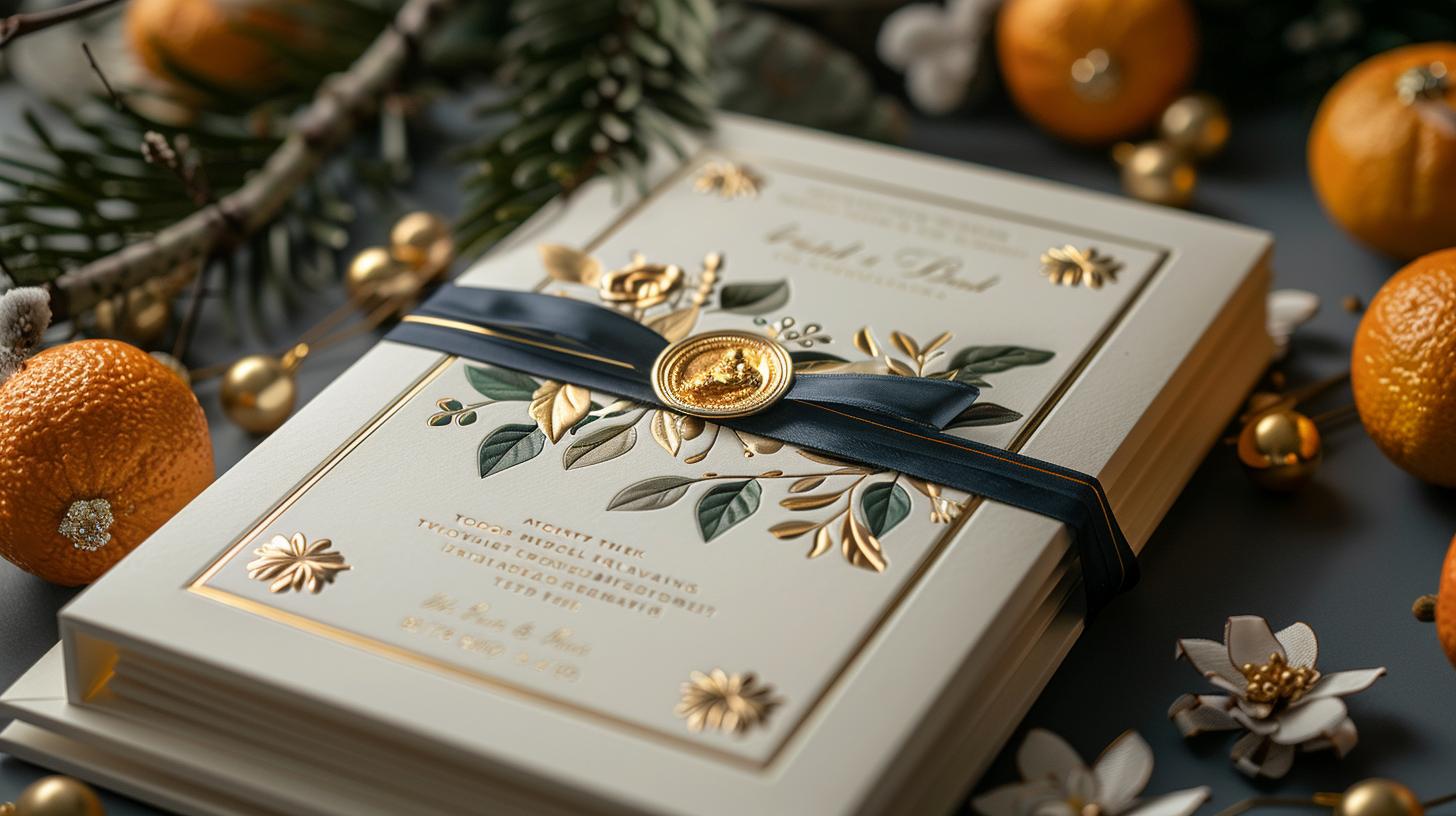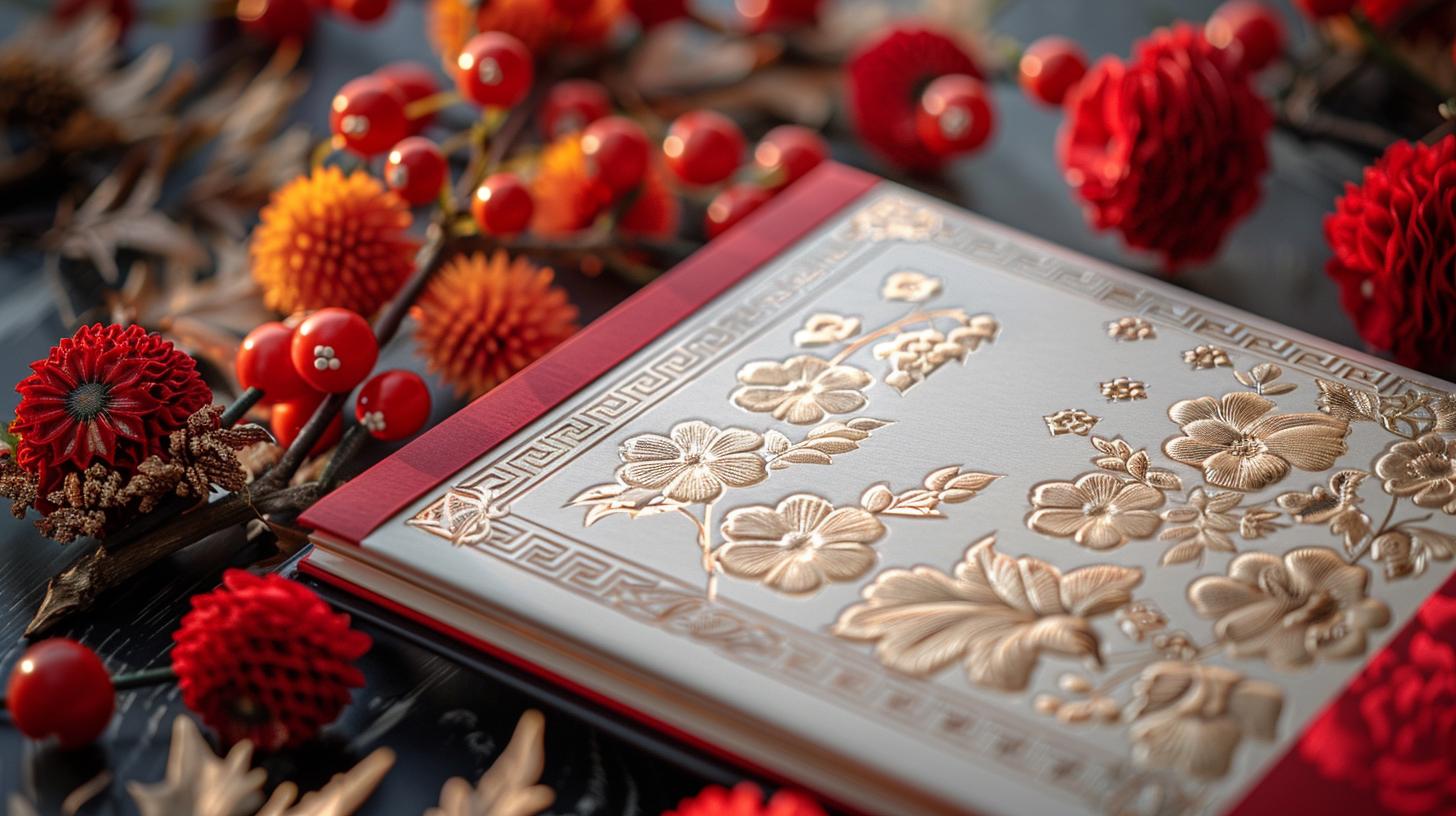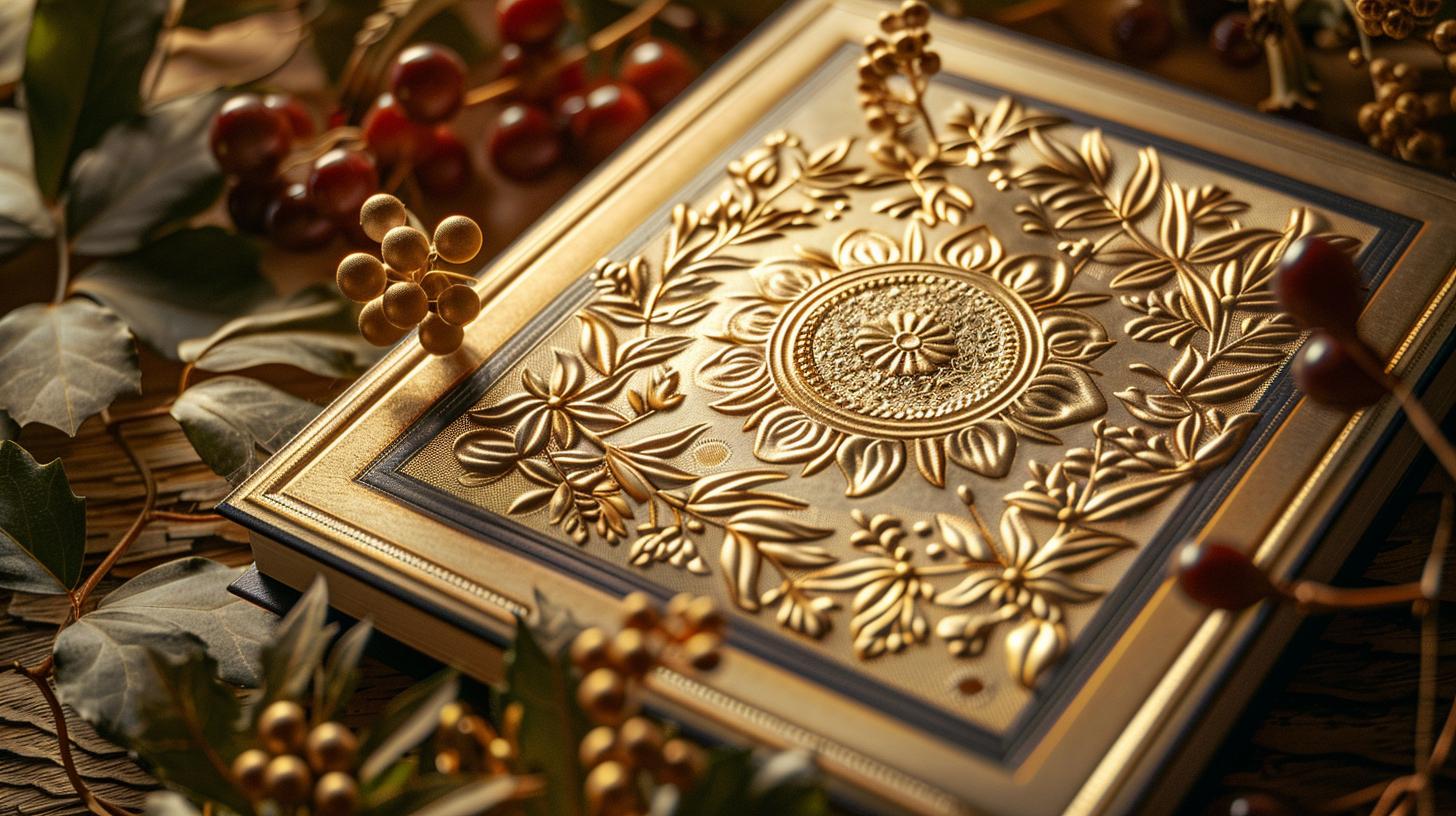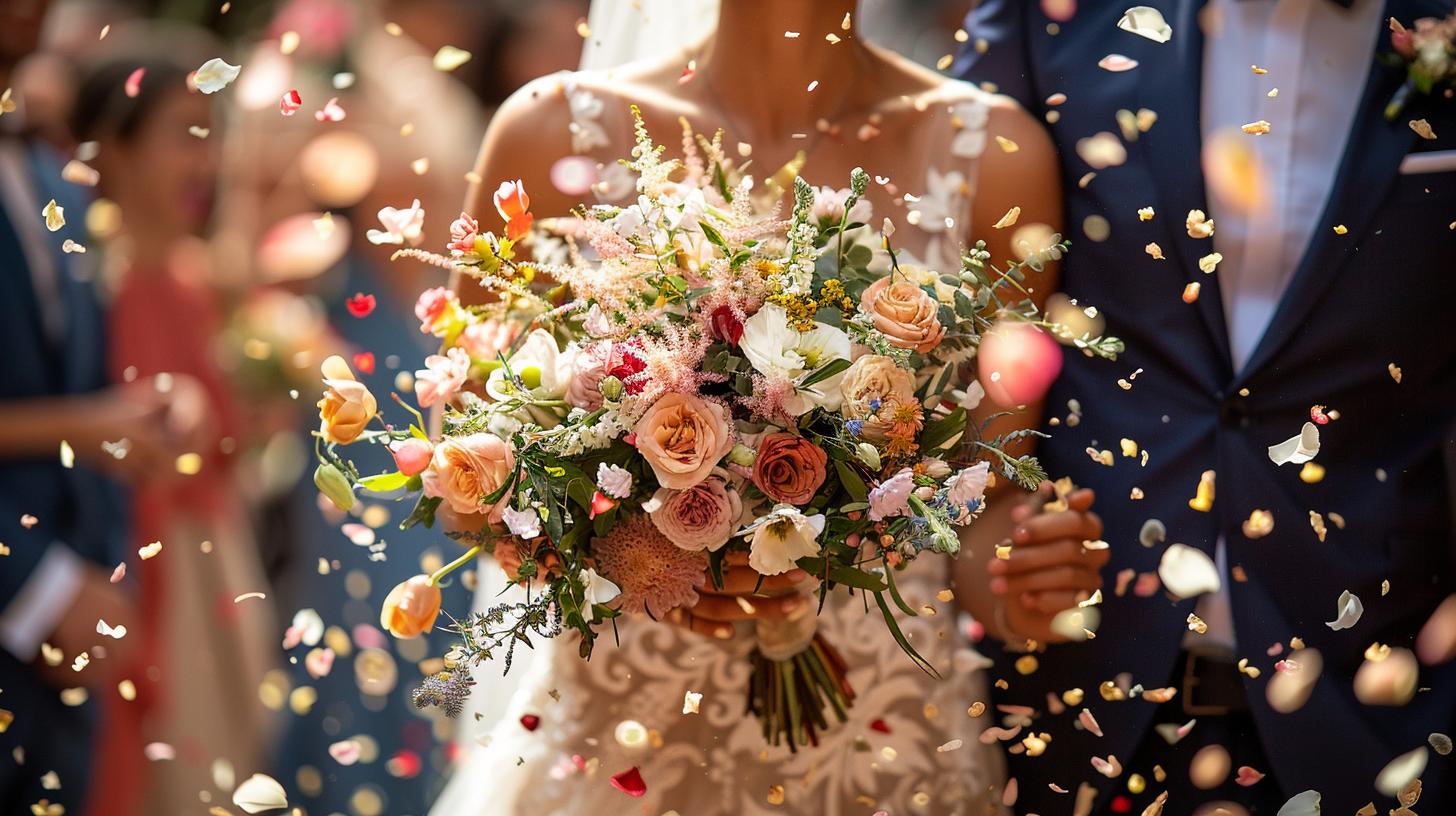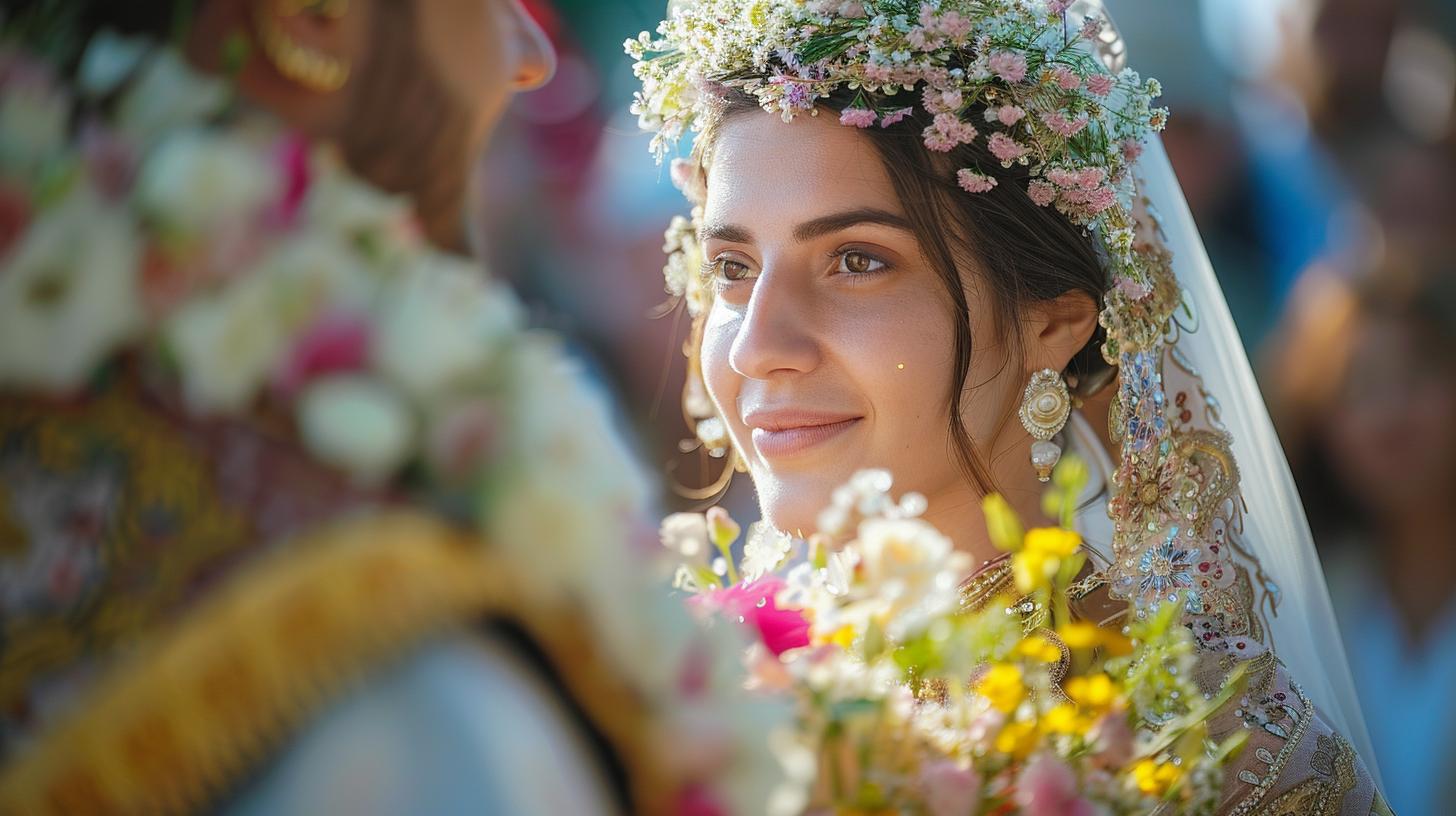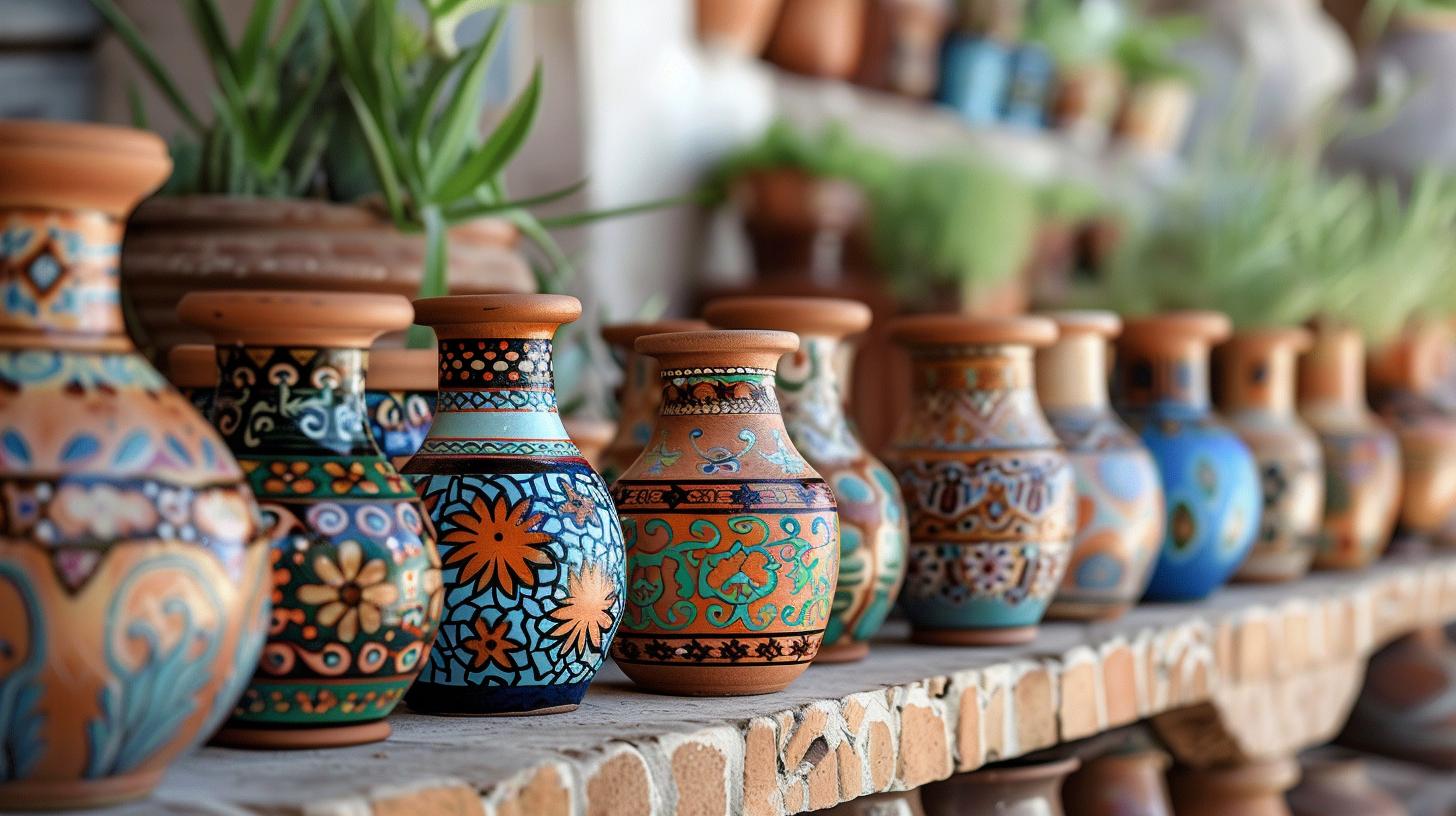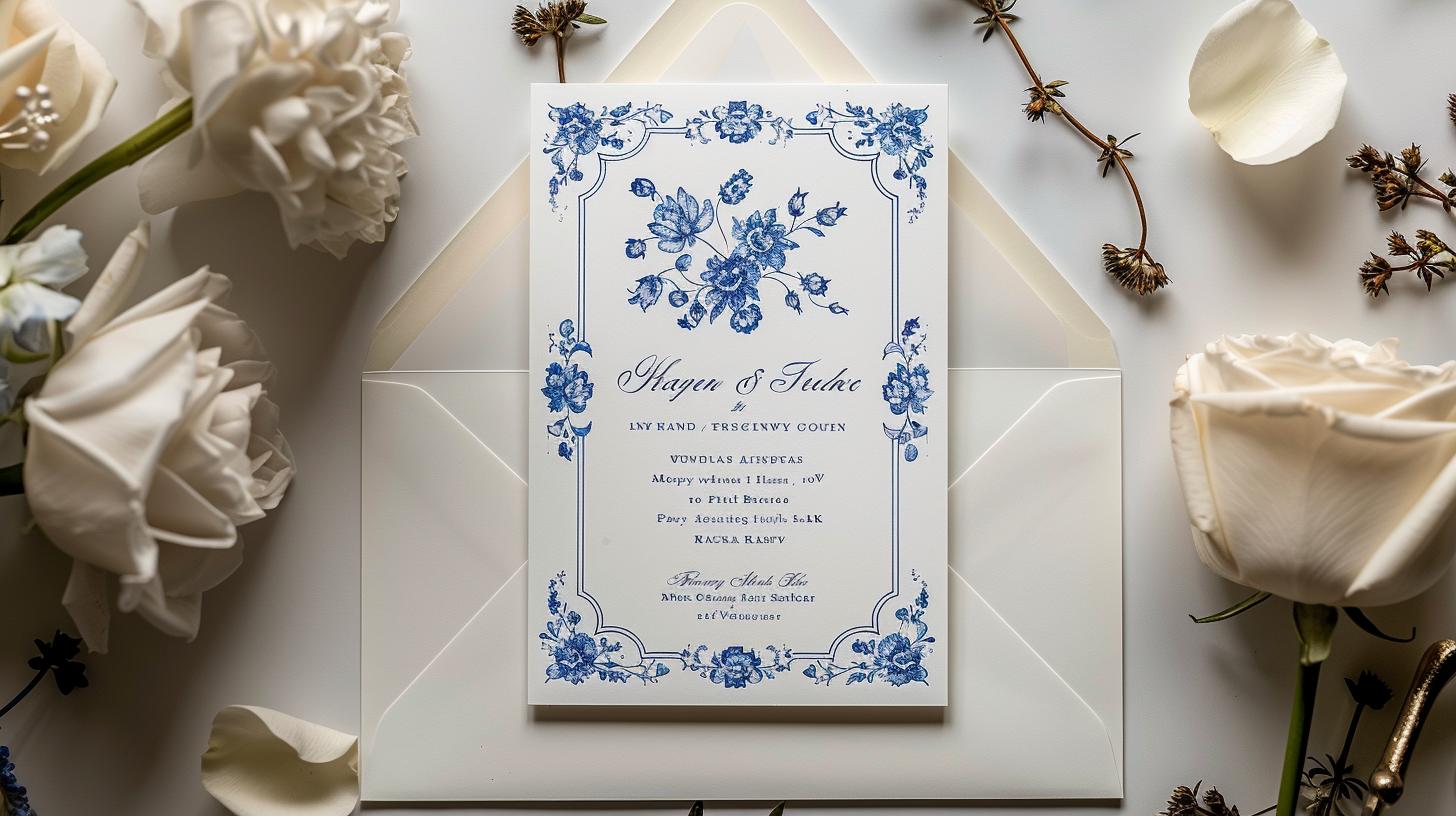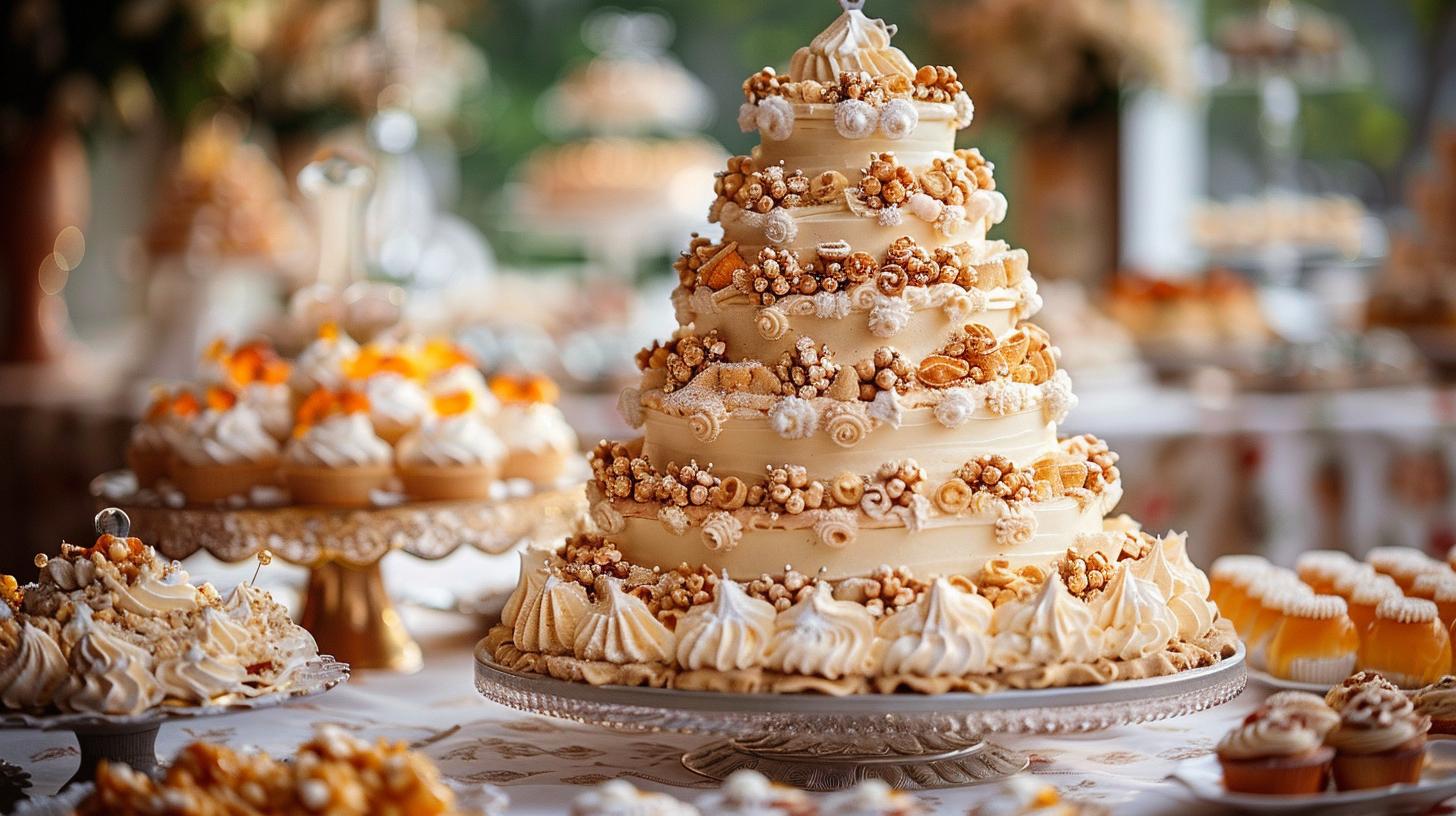Greek Wedding Invitation Ideas: Personalize Your Special Day
Greek wedding invitations play a vital role in setting the tone for the celebration. They reflect cultural significance, showcasing traditions and values that are important to the couple and their families.
Different styles are available, from elegant designs to bohemian themes. Customization options allow couples to create invitations that are unique and personal, ensuring that they resonate with their wedding vision.
The Importance of Greek Wedding Invitations
Greek wedding invitations serve as the initial touchpoint for guests, setting the stage for the celebration that lies ahead. They echo the couple’s personality, cultural background, and the significance of their union.
First Impressions Matter
The moment guests receive an invitation, they form opinions about the upcoming event. A beautifully designed invitation can create excitement and anticipation. It serves as the first glimpse into the couple’s style and the overall theme of the wedding.
By carefully choosing the design, color palette, and typography, couples convey a sense of elegance and thoughtfulness. This establishes a tone that resonates throughout the entire wedding planning process. The quality of the invitation itself—whether it’s a sleek, modern design or a traditional, ornate layout—can leave a lasting impression on those invited.
Cultural Significance
In Greek culture, weddings are momentous occasions filled with rich traditions. Invitations are not just practical tools; they carry deep cultural significance. They often include symbols and designs that reflect Greek heritage, making them unique and meaningful.
Elements like olive branches, which represent peace and victory, or architectural motifs from ancient Greece, can be integrated into the design, highlighting their cultural roots.
Incorporating the Greek language in the invitation text also honors traditions and connects with the couple’s heritage, creating a sense of belonging and celebration of cultural identity.
This is particularly important in communities where maintaining traditions and values is cherished.
Each detail in a Greek wedding invitation serves a purpose, weaving a narrative that binds together the couple’s love story, family history, and cultural background.
As such, the importance of these invitations extends far beyond mere communication; they encapsulate the essence of the union and the joy of celebration within the community.
Styles of Greek Wedding Invitations
Greek wedding invitations showcase a blend of tradition and modern design.
Often characterized by sophisticated aesthetics, these invitations embody a sense of formality and refinement.
Gold and White Combinations
Gold and white combinations are particularly popular in elegant designs. The use of gold accents against a white background creates a stunning visual contrast that exudes luxury. This color palette not only captures the eye but also symbolizes purity and prosperity.
Couples frequently choose gold foil lettering or embossing to elevate the overall presentation.
Luxury Materials
Luxury materials play a crucial role in the design of elegant invitations. High-quality paper stocks, silk ribbons, and even metallic finishes create a tactile experience that complements the visual aesthetics. These materials not only add to the invitation’s durability but also enhance its overall visual appeal.
Bohemian Styles
For couples seeking a more relaxed and artistic approach, bohemian styles offer a perfect alternative. These invitations often reflect a deep connection with nature and a free-spirited mindset.
Floral Illustrations
Floral illustrations are a hallmark of bohemian invitations. Hand-painted or illustrated designs featuring vibrant flowers can add a whimsical touch. Such artwork allows couples to express their individuality while also celebrating the beauty of their surroundings, often integrating elements from their wedding location.
Creative Color Palettes
Creative color palettes further define the bohemian aesthetic. Couples may opt for a mix of earthy tones, pastels, or bold colors that resonate with their personal style. The use of unexpected color combinations can create a striking invitation that sets the tone for a fun and unique celebration.
Rustic Themes
Rustic themes have gained popularity in recent years as couples embrace natural and organic elements. These invitations evoke a warm, inviting atmosphere reflective of outdoor or countryside settings.
Natural Textures
The use of twine, burlap, or lace as embellishments adds a handcrafted feel that further emphasizes a rustic charm.
Handmade Elements
Handmade elements lend a personal touch to rustic invitations. Couples might consider incorporating handmade paper or unique printing techniques, such as letterpress. These artisanal details connect the invitation to the couple’s story and their commitment to sustainability and individuality.
Customization Options
Personalizing Greek wedding invitations allows couples to infuse their unique style and story into each detail of the design. From selecting the perfect type of paper to choosing motifs that represent their heritage, customization brings the couple’s vision to life.
Choosing the Right Paper
The choice of paper is fundamental to the overall aesthetic of the invitation. Different types of paper can evoke various feelings and set the stage for the event. Some popular options include:
- Textured Paper: Provides an elegant tactile experience, often incorporating linen or cotton finishes.
- Shimmer Paper: Adds a touch of glamour with a subtle sheen that catches the light beautifully.
- Pearlescent Paper: Offers a luxurious feel, often used for more opulent wedding themes.
Typography Selections
The typography used in invitations plays a significant role in defining the overall look and feel.
The right font can enhance the invitation’s personality and ensure legibility. Consider these typography options:
Cursive and Handwritten Fonts
Cursive and handwritten fonts add a romantic touch, perfect for conveying warmth and intimacy. These styles often mimic elegant scripts, making them ideal for more traditional themes.
Modern Block Letters
For a contemporary flair, modern block letters provide a clean and sophisticated look. These fonts complement minimalistic designs and can be paired beautifully with decorative elements without being overwhelming.
Color Choices
The color palette is essential in creating the mood for the wedding.
Selecting the right combination of colors can make the invitations pop and resonate with the couple’s theme. Notable color options include:
Traditional Greek Blues
Inspired by the stunning oceans of Greece, shades of blue symbolize depth and tranquility. Incorporating these hues can highlight the couple’s connection to their heritage.
Rose Gold and Other Accents
Motifs and Graphics
Incorporating motifs and graphics adds a layer of personalization and cultural significance to wedding invitations.
These details can tell a story or signify important values. Popular motifs include:
Olive Leaves and Greek Symbols
Olive leaves symbolize peace and abundance, making them a beautiful choice for wedding invitations. Alongside other Greek symbols, these elements can signify unity and love.
Architectural Elements
Inspired by Greece’s rich architectural heritage, including elements like columns or key patterns can evoke a sense of authenticity and tradition. These graphics can be subtly woven into the design, enhancing the overall aesthetic without overwhelming it.
Text and Messaging
Effective communication through text and messaging is crucial for conveying the unique sentiment of a Greek wedding. It establishes the event’s atmosphere and imparts the necessary information to guests.
Formal vs.
Casual Text
Choosing the right tone for the invitation text is essential to reflect the couple’s personality and the event’s nature. A formal text is typically characterized by traditional language and structured formatting, providing a sense of elegance.
It is often preferred for religious ceremonies or more traditional weddings, where formalities are key.
Conversely, casual text allows for a more relaxed and personal approach. This style may include humor or playful elements and can resonate well with a modern audience seeking a laid-back atmosphere.
Couples often strike a balance between formal and casual to encapsulate their unique love story.
Incorporating Greek Language Elements
Incorporating Greek language elements into the text can add authenticity and charm to the invitation. Using Greek phrases, such as “Σ’αγαπώ” (I love you) or “Ευχαριστώ” (Thank you), can be a beautiful way to honor tradition while engaging guests from different backgrounds.
In addition, families with Greek heritage may select specific terms or phrases significant to their story. This infuses the invitation with personal meaning while showcasing cultural pride.
Key Information to Include
Every invitation should clearly communicate essential details to ensure guests are well-informed.
Key information typically includes:
- Names of the couple: The full names prominently displayed set the invitation’s tone.
- Date and time: Including both the day and time helps guests plan accordingly.
- Venue details: Providing the full address of the ceremony and reception venues ensures guests arrive at the right location.
- Dress code: Specifying a dress code can help maintain the event’s intended ambiance, whether it’s formal, semi-formal, or casual.
- RSVP information: A clear method for guests to confirm their attendance, whether by phone, email, or a website, is essential for accurate planning.
Including this key information in a concise yet elegant manner is crucial.
Proper formatting and spacing enhance readability, ensuring all guests understand the invitation’s details.
Integration into Wedding Planning
Incorporating wedding invitations into the overall wedding planning process is essential for creating a cohesive experience. Invitations serve as a first point of contact, setting the tone for the celebration. Each aspect, from save the dates to design coordination, enhances the overall aesthetic of the event.
Save the Dates
Save the dates are a practical way to notify guests well in advance of the wedding date. They allow couples to secure the attendance of important guests, particularly for destination weddings or busy seasons.
These preliminary notifications can be as creatively designed as the formal invitations, giving guests a glimpse of the wedding’s theme. It is common for couples to send save the dates four to six months before the actual wedding.
Design Coordination
Achieving a unified look throughout the wedding will enhance the overall ambiance of the celebration. Design coordination involves selecting elements that align with the theme established by the invitations. From color palettes to motifs, every detail contributes to a harmonious event.
Matching Wedding Stationery
Matching wedding stationery includes all printed materials that will be utilized throughout the event. Couples often create a cohesive suite that includes not only invitations but also programs, menus, and other printed materials.
The design elements should reflect the same style—be it elegant, bohemian, or rustic—which provides a polished and coordinated atmosphere.
Coordinated Place Cards and Table Numbers
Place cards and table numbers are another aspect of design coordination that ties the wedding together. These items should complement the wedding invitations to extend the visual theme into the reception area.
Using similar colors, typography, and motifs will ensure a seamless transition from the ceremony to the celebration. This attention to detail makes guests feel like a part of the couple’s unique story.
Planning for a wedding involves several practical considerations that are essential for ensuring a smooth process. This includes budgeting, timelines, and mailing options, all of which play a crucial role in the overall experience.
Practical Considerations
Budgeting for Invitations
Establishing a budget for wedding invitations is a critical step in the planning process. The costs can vary significantly based on the complexity of the design, materials chosen, and the number of invitations needed.
Couples should consider the following factors:
- Design Complexity: Unique designs or custom artwork may raise the overall cost.
- Materials: Higher quality paper or specialty materials can lead to an inflated budget.
- Printing Techniques: Methods such as letterpress, foil stamping, or embossing often come with additional costs.
- Quantity: Ordering in bulk might reduce the price per invitation but can also lead to unneeded extras if guest lists aren’t managed carefully.
Timeline and Production Time
Timing is essential when it comes to creating and sending invitations.
The production of customized invitations can take longer than expected. Planning ahead can alleviate last-minute stress. Important aspects to consider include:
- Design Finalization: Couples should allow adequate time for mock-ups, revisions, and final approvals.
- Production Time: Most printing services require several weeks, so it is advisable to order them well in advance of the wedding date.
- Mailing Time: Consider additional time for mailing invitations to guests, especially for those living abroad.
Managing Guest Lists
Creating and managing a guest list is integral to the invitation process.
This not only influences the number of invitations needed but also affects budgeting and planning. Key considerations include:
- Finalizing the List: Establish a comprehensive list of guests before sending invitations to ensure appropriate quantities are ordered.
- Tracking Responses: Using a spreadsheet or wedding planning app can help keep track of RSVPs and make it easier to communicate with guests.
Mailing Options
The method of sending invitations can influence both the cost and the presentation of the invitations.
There are various options to consider:
Traditional Mail
Many couples prefer traditional mailing for its personal touch. This method not only delivers an elegant feel but also allows for a tangible invitation that guests can hold. Important factors include:
- Postage Costs: Always factor in the cost of stamps, especially for heavier or larger invitations.
- Tracking Capabilities: Some services offer tracking for a fee, which can provide peace of mind.
Eco-friendly Digital Invitations
Digital invitations are an increasingly popular choice for modern weddings.
They tend to be more cost-effective and environmentally friendly. Considerations for this option include:
- Design Variety: Many platforms offer customizable templates that can mimic physical invitations.
- Immediate Delivery: Digital invitations can be sent instantly, ensuring guests receive timely information.
- RSVP Tracking: Digital platforms often include easy RSVP tracking features, simplifying guest management.
Cultural and Religious Influences
Cultural and religious influences play a vital role in shaping the aesthetics and messaging of Greek wedding invitations.
These elements reflect the deep-rooted traditions and beliefs that define the celebration.
Symbolism of Flowers and Colors
The choice of flowers and colors in Greek wedding invitations is infused with significant meanings. Each floral element carries symbolism that contributes to the overall message of love and unity.
- Olive Leaves: Often featured in designs, olive leaves symbolize peace and victory. They are a representation of abundance and harmony, making them a popular choice in wedding graphics.
- Roses: Known for their beauty and fragrance, roses symbolize love and passion.
In the context of weddings, they emphasize the romantic bond shared by the couple.
- Color Meanings:
- White: Traditionally represents purity and new beginnings.
- Red: Symbolizes love and passion, often chosen to express deep emotional ties.
- Gold: Reflects wealth and grandeur, bringing an element of luxury to the overall theme.
Religious Elements in Invitations
Religion holds a significant place in Greek weddings, often influencing the design and content of invitations.
These elements serve to highlight the spiritual connections that bind the couple and their families.
- Incorporation of Religious Symbols: Common symbols include crosses and images of Saints, which may be integrated into the design of the invitation.
These symbols denote faith and commitment to family values.
- Reference to Religious Traditions: Invitations may also note significant religious ceremonies, such as the sacrament of marriage performed in the Orthodox Church.
Clear references set the tone for a spiritually enriching celebration.
- Use of Greek Language: Including phrases or blessings in the Greek language deepens the cultural resonance of the invitations. Such choices reflect the couple’s heritage and shared values.
Trends in Greek Wedding Invitations
As weddings evolve, so do the styles and designs of Greek wedding invitations.
Couples are increasingly leaning towards unique, personalized options that reflect their personalities and cultural heritage. This section explores the latest trends that are shaping the landscape of Greek wedding invitations.
Modern Trends
In recent years, modern trends have emerged, focusing on minimalistic designs paired with intricate details. Couples are opting for invitations that speak to contemporary aesthetics while still honoring traditional elements.
- Geometric patterns and clean lines are popular, showcasing a blend of sophistication and simplicity.
- Bold colors and minimalist text create a striking visual impact, making invitations stand out.
- Digital invitations are gaining traction, providing eco-friendly options without sacrificing style.
Classic Inspirations
Classic designs continue to hold a significant place in Greek wedding invitations.
Many couples are inspired by the timeless elegance of traditional styles, integrating them with modern touches.
- Gold accents paired with soft color palettes maintain a sense of luxury, reminiscent of traditional ceremonies.
- Floral motifs pay homage to rich Greek culture while adding a touch of romance.
- Ornate calligraphy and vintage-inspired typography enhance the classic feel, making each invitation a work of art.
Unique and Custom Designs
Today’s couples are embracing unique customization options that reflect their personal stories and affinities.
Custom-designed invitations allow for creative expression that makes each wedding distinct.
- Incorporating personal elements, such as favorite quotes, locations, or symbols, makes invitations memorable.
- Bohemian designs featuring watercolor illustrations and natural textures capture the essence of a laid-back yet beautiful celebration.
- Handmade invitations are increasingly cherished for their individuality, often using sustainable materials that honor the environment.
Thank you cards and additional stationery play a significant role in the overall wedding experience.
They express gratitude and provide a cohesive look to the wedding theme, reinforcing the celebration’s aesthetic.
Thank You Cards and Additional Stationery
Designing Thank You Cards
Creating thank you cards is an important task that allows couples to convey their appreciation to family and friends who attended their wedding.
The design of these cards can reflect the wedding theme, incorporating similar colors, motifs, and styles to create a sense of unity.
By choosing elements from the wedding invitations, couples can ensure a consistent look throughout their wedding stationery.
Personal Touch
Including personal messages, along with the couple’s names and wedding date, adds a heartfelt touch. Handwritten notes can enhance the sentiment, making each recipient feel valued.
Size and Format
Thank you cards can come in various sizes, though a standard choice is often 4×6 inches or 5×7 inches.
Envelopes should match in design and color for a polished presentation.
Materials
Selecting high-quality paper can elevate the design. Consider using textured, recycled, or metallic finishes to align with the wedding’s style.
Other Essential Wedding Stationery
In addition to thank you cards, there are several other types of wedding stationery that enhance the event’s overall cohesiveness. Each piece can tie back to the primary invitation design, allowing the couple to maintain a consistent theme.
Save the Dates
These initial announcements inform guests about the wedding date well in advance. They can be designed similarly to invitations, providing a sneak peek of the wedding’s aesthetic.
RSVP Cards
RSVP cards are crucial for managing guest lists and ensuring proper planning for the event.
These can be included with invitations, designed in the same style, making the response process easy and elegant.
Menus
Menus can be placed at each table setting, showcasing the meal options while complementing the overall decor. Including floral illustrations or motifs from the invitations will create a seamless look.
Place Cards and Table Numbers
Place cards guide guests to their assigned tables, enhancing the organization of the reception.
Table numbers can also mirror the design of other stationery, contributing to a unified visual theme.
.

